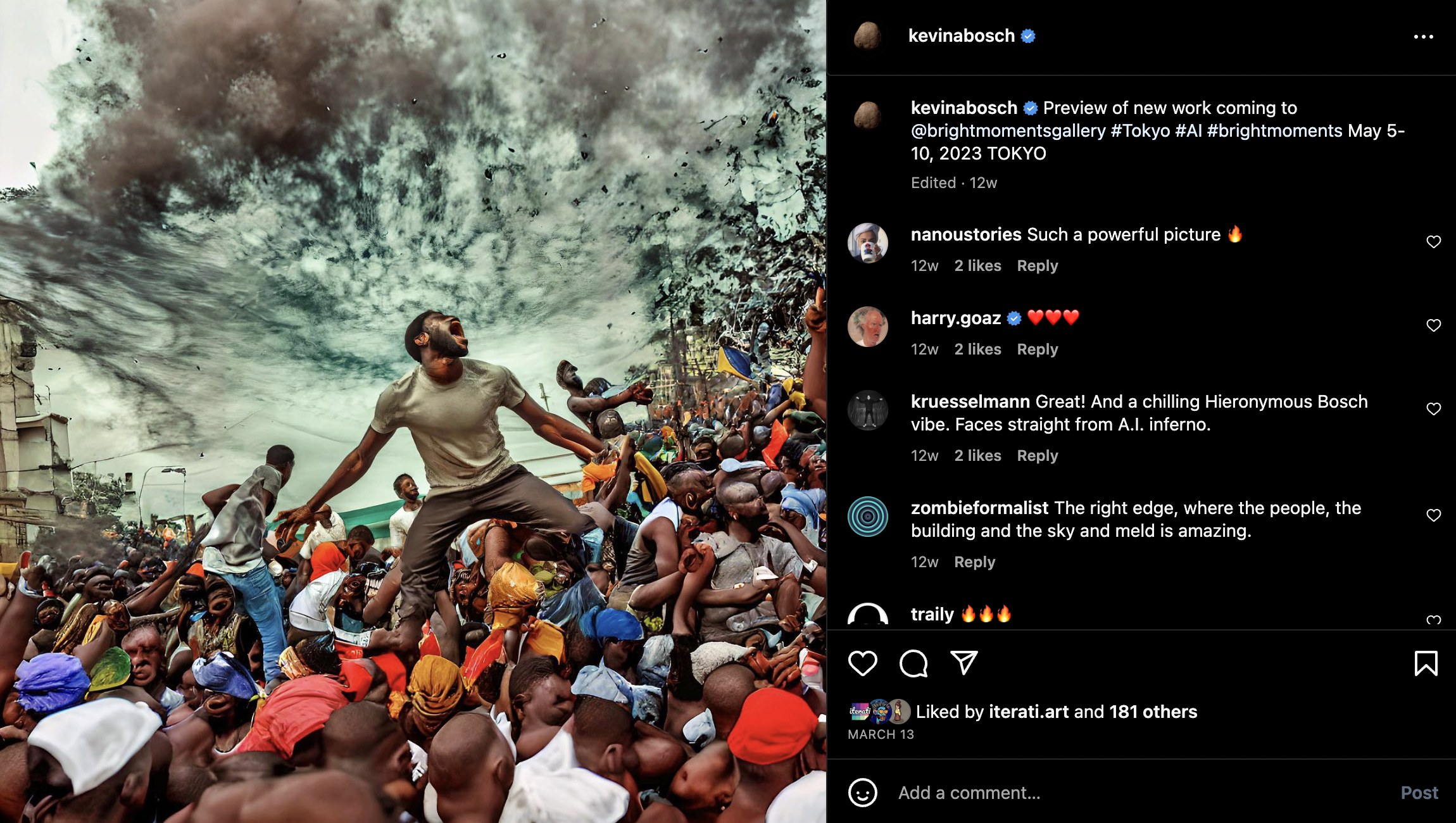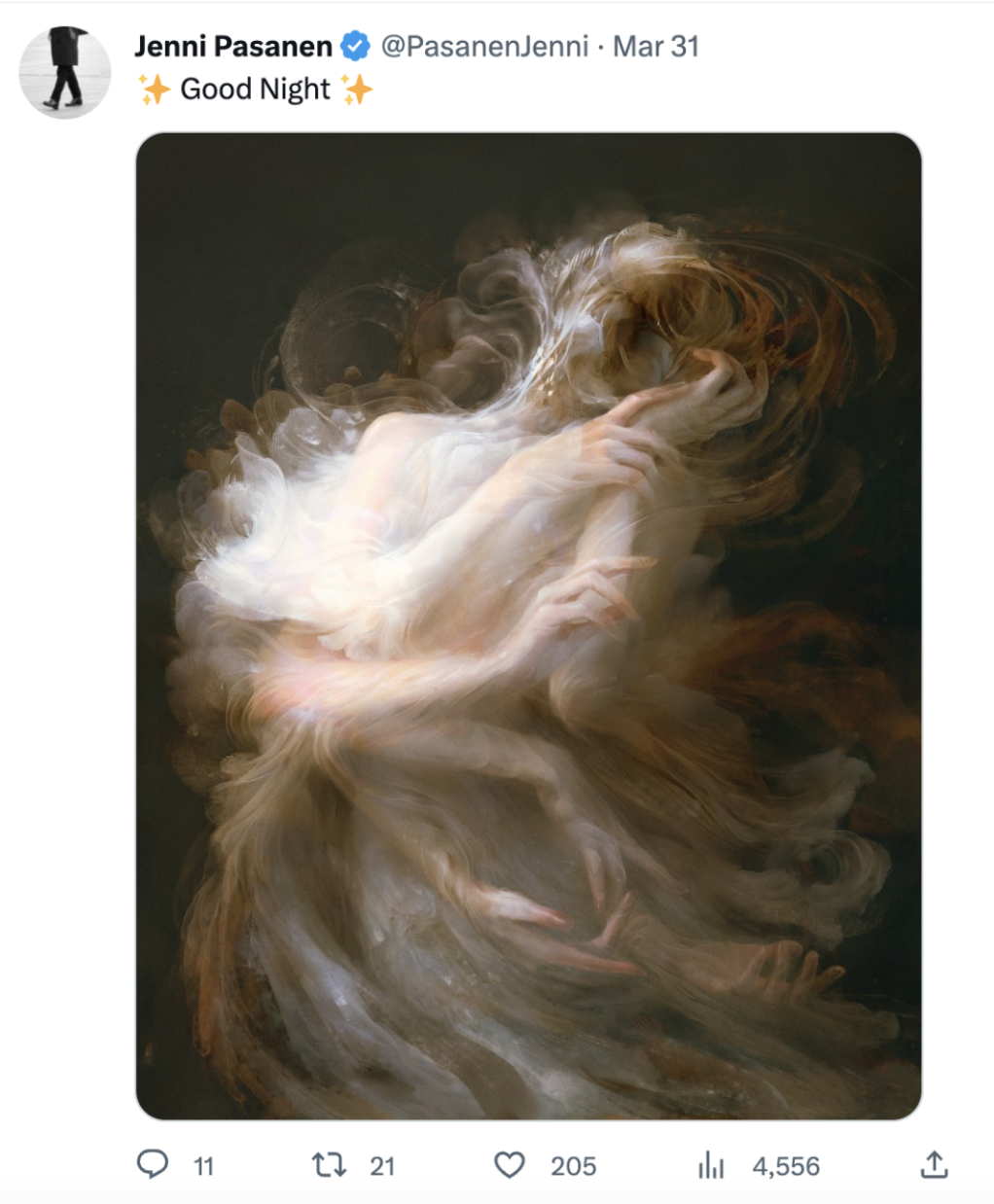AI Collection INTRO…
This was part of an ongoing series of articles that released was digitally in May 2023. They were first published in the print edition of the Bright Moments Quarterly that was distributed at Bright Moments Tokyo in Tokyo, Japan.
BRIGHT MOMENTS TOKYO
AI COLLECTION
AIコレクション
STRANGE TRUTHS
奇妙な真実
By Seth Goldstein, Founder
Seth Goldstein による、創設者の言葉
Truth is stranger than fiction, but it is because Fiction is obliged to stick to possibilities; Truth isn't. Mark Twain
As an AI language model, I do not have personal memories or experiences. However, my knowledge is based on the text data and information I have been trained on, which goes up to September 2021. GPT4
The strange truth that GPT4 doesn’t know is Bright Moments. Over the past two years, we have been starting NFT art communities around the world. Each city activation starts with the minting of 1,000 new CryptoCitizens NFTs, who collectively steer the Bright Moments DAO.
GPT4が知らない奇妙な真実は、Bright Momentsです。過去2年間で、私たちは世界中でNFTアートコミュニティを立ち上げてきました。各都市での活動は、1,000枚の新しいCryptoCitizens NFTのミントから始まり、彼らがまとめてBright MomentsDAOを操縦します。
We started in the Summer of 2021 by minting free CryptoVenetians to visitors at our first Venice Beach location. Later that fall, we rented a gallery in SoHo and minted CryptoNewYorkers. We then took over Kraftwerk in Berlin last April and produced 10 monumental nights of minting CryptoBerliners. A few months later, we found a boutique in Mayfair where we minted CryptoLondoners in a private drawing room. With our CryptoMexas last November, we added food and workshops over four days to create a magical festival of arte generativo.
私たちは2021年の夏に、最初のベニスビーチの場所で訪れた人たちに無料のCryptoVenetiansをミントすることから始めました。その年の秋には、ソーホーのギャラリーを借りてCryptoNewYorkersをミントしました。その翌年の4月にはベルリンのクラフトヴェルクを利用し、10の壮大な夜を経てCryptoBerlinersをミントしました。数か月後、メイフェアのブティックでプライベートな部屋でCryptoLondonersをミントしました。昨年11月のCryptoMexasでは、4日間にわたって食事やワークショップを加えて、アルテ・ヘネラティーボの魔法の祭典を創り上げました。
Our IRL minting experiences have inspired a number of artists to work with us on projects that bring their on-chain generative art to life in real world environments. These are magical minting moments, when the artist and collector have a chance to reveal a work of art for the first time, together.
私たちのIRLのNFTミント体験は、アーティストのオンチェーンのジェネラティブアートを現実の環境で具現化するプロジェクトであり、多くのアーティストにインスピレーションを与えました。これらは、アーティストとコレクターが初めて一緒に作品と対峙する機会となる、魔法のようなNFTミントの瞬間です。
Up until now, our live minting shows have been based on algorithms, which are programmed by the artist to randomly generate a certain number of outputs, on-chain, to different wallets. With generative art, the artists are in control of every piece of code. They tweak the script, based on the test outputs they generate, and then upload it to main net. This is where they give up control to the collector, who in one transaction will end up generating and owning an output of the artist’s algorithm.
これまでのところ、私たちのライブミントショーは、アーティストがプログラムし、オンチェーン上で異なるウォレットにランダムに一定数のアウトプットを生成するアルゴリズムに基づいています。ジェネラティブアートでは、アーティストがすべてのコードを制御しています。彼らは生成したテストアウトプットに基づいてスクリプトを調整し、それをメインネットにアップロードします。ここで彼らは、コレクターに制御を委ね、1回の取引でアーティストのアルゴリズムのアウトプットを生成し所有することになります。
Meanwhile, AI Art is growing. It doesn’t quite fit within the same parameters we are used to, and yet it feels more related to what we have been doing than any other art form. AI Artists use mostly different tools than generative artists. Instead of P5, processing and shaders, they use GANs, diffusion models (Stable Diffusion, Dall-E, MidJourney) and LLMs (ie GPT4). Some AI Artists write low level code and configure their own pipelines, others have been training their own models for years, and still others use simple prompts on consumer interfaces.
一方、AIアートは成長しています。私たちが慣れ親しんでいる範囲とは異なるものでありながら、他のどのアート形式よりも私たちがこれまで行ってきたことと関連性が感じられます。AIアーティストは、ジェネラティブアーティストとは異なるツールを主に使用しています。P5やProcessing、シェーダーの代わりに、彼らはGAN、拡散モデル(Stable Diffusion、Dall-E、MidJourney)やLLM(例:GPT4)を使います。一部のAIアーティストは、低レベルのコードを記述し、独自のパイプラインを構成しています。また、長年にわたって独自のモデルを学習してきた人もいれば、消費者向けのインターフェースでシンプルなプロンプトを使用する人もいます。
We invited 11 of the leading AI artists to participate in Bright Moments Tokyo by producing 100 different NFTs each. While it seems inevitable to us that AI Art will move 100% on-chain, the fact is that many of its training models are too large to fit. Here in Tokyo we are taking a pragmatic approach to minting AI Art: some artists are generating and curating their outputs in advance (and randomize their distribution), others wish to minimize external dependencies and generate outputs entirely on-chain.
私たちは、Bright Moments Tokyoに参加するために、11人のトップAIアーティストにそれぞれ100枚の異なるNFTを制作してもらいました。AIアートが100%オンチェーンに移行することは避けられないと私たちは考えていますが、多くのトレーニングモデルが大きすぎて収まらないという事実があります。東京では、AIアートをミントするために現実的なアプローチを取っています。一部のアーティストは事前にアウトプットを生成・キュレーションし(分布をランダム化)、他のアーティストは外部依存関係を最小限に抑え、アウトプットを完全にオンチェーンで生成することを望んでいます。
We believe that the quality and diversity of these 1,100 AI artworks will lead the Bright Moments Tokyo AI Collection to be considered one of the canonical exhibits of this new art form.
これら1,100点のAIアート作品の質と多様性が、Bright Moments Tokyo AIコレクションがこの新しいアート形式の典型的な展示の一つとして評価されることにつながると、私たちは信じています。
Kevin Abosch is an Irish conceptual artist known for his work in photography, installation, sculpture, film, and blockchain technology, where he is recognized as a pioneer in cryptoart. His artwork aims to highlight the nature of identity, value, and human currency, posing ontological questions and addressing sociological dilemmas. Abosch's work has been exhibited across the world, often in civic spaces, including The National Gallery of Ireland, The Hermitage Museum, The Irish Museum of Modern Art, and The National Museum of China. Among his notable works are "Forever Rose," a virtual artwork consisting of a single ERC-20 token on the Ethereum blockchain and "Yellow Lambo," a sculpture composed of 42 inline alphanumerics in yellow neon. His work for Tokyo highlights that the corrupt images in his artwork offer deeper truths compared to perfect synthetic realities. He notes that viewers might question whether the scenes represent the past, present, or future. Abosch acknowledges that protest and civil disobedience are inherent parts of our current global reality.
ケビン・アボッシュは、写真、インスタレーション、彫刻、映画、ブロックチェーン技術などの分野で活躍するアイルランドのコンセプチュアルアーティストであり、クリプトアートの先駆者として認知されています。彼の作品は、アイデンティティ、価値、人間の通貨の本質を浮き彫りにし、存在論的な問いや社会学的なジレンマに取り組んでいます。アボッシュの作品は、アイルランド国立美術館、エルミタージュ美術館、アイルランド近代美術館、中国国立博物館など、市民空間を含む世界各地で展示されています。彼の代表作には、「フォーエバー・ローズ」(イーサリアムのブロックチェーン上にある1つのERC-20トークンで構成されたバーチャルアート作品)や「イエロー・ランボ」(黄色のネオンで作られた42のインライン英数字から成る彫刻)があります。彼の東京での作品は、彼の作品における破壊されたイメージが、完璧な合成現実に比べてより深い真実を提供していることを強調しています。彼は、観客がその場面が過去、現在、未来のどれを表しているのか疑問に思うかもしれないと指摘しています。アボッシュは、抗議と市民的不服従が現在のグローバルな現実の本質的な部分であることを認めています。
Ganbrood is a self-taught artist who has worked in various forms of visual storytelling, including special effects, 3D animation, video games, and photography. Since 2019, he has been working with generative adversarial networks (GANs) to create artworks that explore the boundaries between illusion and reality. His latest works are abstract and "pseudo-figurative," interrogating the ability of GANs to disrupt human visual recognition. Ganbrood is fascinated by the fine line between figuration and abstraction, and his work often combines elements from various historical reference points, including the Dutch Golden Age, romanticism, and comic art. As an artist, Ganbrood believes in the importance of communicating his entire soul to the audience. He sees AI as a direct connection to the present time and a tool for exploring the unknown. By relying on his intuition and experimenting with available models, he has been able to produce striking images that defy their machinic production. Ganbrood's work reminds us of the transformative power of AI in the art world and its ability to reshape our understanding of visual storytelling.
ガンブルードは、独学のアーティストであり、特殊効果、3Dアニメーション、ビデオゲーム、写真など、さまざまな形式の視覚的ストーリーテリングに取り組んできました。2019年以降、彼は敵対的生成ネットワーク(GAN)を使って、幻想と現実の境界を探求するアート作品を制作しています。彼の最新の作品は抽象的で「疑似具象」であり、GANが人間の視覚認識を破壊する能力を問い詰めています。ガンブルードは、具象と抽象の間の微妙な境界に魅了されており、彼の作品はしばしばオランダ黄金時代、ロマン主義、コミックアートなど、さまざまな歴史的参照点の要素を組み合わせています。アーティストとして、ガンブルードは観客に自分の魂全体を伝えることの重要性を信じています。彼はAIを現在の時代と直接つながるもの、未知を探求するための道具だと考えています。直感に頼り、利用可能なモデルを試すことで、彼は機械的な制作を無視した印象的なイメージを作り出すことができました。Ganbroodの作品は、アートの世界におけるAIの変革力と、ビジュアルストーリーテリングの理解を再構築する能力を思い起こさせます。
Sofia Crespo has a deep fascination for biology-inspired technologies. Her work explores the intersection between organic life and artificial mechanisms, emphasizing the idea that technologies are products of the organic life that created them, rather than completely separate objects. Crespo’s work often features AI-driven biological portraits, which question the potential of AI in artistic practice and its ability to reshape our understanding of creativity. She uses neural networks and machine learning to generate ornate new biological worlds, which often seem like they are from the Victorian era. Her love for jellyfish is also evident in her work, as she finds inspiration in their intricate structures and fluid movements.
ソフィア・クレスポは、生物学にインスパイアされた技術に深い魅力を感じています。彼女の作品は、有機的な生命と人工的な仕組みの交差点を探求し、技術がそれを生み出した有機的な生命の産物であるという考え方を強調しています。クレスポの作品には、AIが駆動する生物学的なポートレートがよく登場し、AIが芸術的実践における可能性や私たちの創造性に対する理解を再構築する能力に疑問を投げかけています。彼女はニューラルネットワークや機械学習を使って、装飾的な新しい生物学的世界を生成し、それらはしばしばヴィクトリア時代のもののように見えます。また、彼女の作品にはクラゲへの愛も明らかであり、その複雑な構造や流れるような動きにインスピレーションを受けています。
Jenni Pasanen is a digital painter who uses AI as a paintbrush: “Humans are emotional animals; we limit our imagination to things we have experienced. By adding machines without emotional limitations as a part of my work, I am able to create things I could have never thought on my own. For me, creating art is how I express myself. I want to bring part of myself into each piece I make; that's why I also use a lot of time with digital painting. AI works as my paint and muse; it lets me dive into my imagination, releasing the unlimited playfield of imagination. It's a beautiful tool, an extension for creativity.”
ジェニ・パサネンは、AIをペイントブラシとして使うデジタル画家です。「人間は感情的な動物であり、私たちの想像力は経験したことに制限されています。感情的な制約のない機械を作品の一部として加えることで、私は自分だけでは思いつかなかったことを創造できるようになります。私にとって、芸術を創造することは自己表現の方法です。私は作る一つ一つの作品に自分自身の一部を持ち込みたいと思っており、そのためにデジタルペイントにも多くの時間を費やしています。AIは私の絵の具やミューズとして機能し、想像力の無限の遊び場に飛び込むことを可能にします。それは美しい道具であり、創造性の拡張です。
Helena Sarin is a visual artist whose expertise in Generative Adversarial Networks (GANs) informs her work on innovative visual ideas and textures, all while emphasizing the crucial role of human intervention in the creative process. In 2021, she channeled her artistic energy into the #potteryGAN project, which transforms her GAN-inspired designs into functional 3D ceramic objects. For the Tokyo Collection, Sarin presents "Kogei Kats & Kompanions," an enchanting assortment of generative cats that pay homage to the rich Japanese tradition of Kogei ceramics. Sarin's focus on GANs resonates with the classical Japanese tradition of Kogei ceramics, which emphasizes the use of traditional techniques to create objects that are both beautiful and functional. Her work in merging technology with traditional crafts creates a unique and intriguing body of work that bridges the gap between the past and the future.
ヘレナ・サリンは、Generative Adversarial Networks(GANs)の専門知識を活かして革新的な視覚的アイデアやテクスチャを作り出すビジュアルアーティストであり、同時に創造過程における人間の介入の重要性を強調しています。2021年、彼女は#potteryGANプロジェクトにアーティスティックなエネルギーを注ぎ込み、GANに触発されたデザインを機能的な3Dセラミックオブジェクトに変換しました。東京コレクションでは、サリンは「Kogei Kats & Kompanions」と題した、日本の豊かな工芸陶磁器の伝統に敬意を表したジェネラティブな猫の魅力的なアソートメントを披露します。サリンのGANへの焦点は、美しく機能的なオブジェクトを生み出すために伝統的な技法を使用することを重視する、日本の古典的な工芸陶磁器の伝統と共鳴します。彼女の技術と伝統的な工芸を融合させる作品は、過去と未来の間の隔たりを埋める独特で興味深い作品群を生み出しています。
Ivona Tau is a groundbreaking AI artist and researcher who explores the integration of technology into the creative process. Her work centers around the intersection of arts and photography with new technologies and machine learning, and her goal is to find and evoke emotions in artificially intelligent tools, making them more human. By collaborating with machines, she also explores her own inner emotional states. Ivona believes in leveraging AI's computational power for greater purposes and seeks to understand its perspective and insights, rather than striving for perfect imitation. Her current projects revolve around the themes of humans as integral components of both the environment and civilization, while highlighting the inherent tension between the two.
イヴォナ・タウは、技術と創造プロセスの統合を探求する画期的なAIアーティスト兼研究者です。彼女の作品は、芸術と写真と新技術、機械学習との交差点を中心に据えており、目標は人工知能ツールに感情を見つけて喚起し、それらをより人間らしくすることです。機械と共同して制作することで、彼女は自分自身の内面の感情状態も探求しています。イヴォナは、AIの計算能力をより大きな目的のために活用し、その視点や洞察を理解しようとすることを信じており、完璧な模倣を追求するのではなく、そうした方向性を目指しています。彼女の現在のプロジェクトは、環境と文明の両方において人間が不可欠な要素であるというテーマを中心に展開されており、その二つの間に潜在する緊張感を強調しています。
Pindar Van Arman an American artist and roboticist who explores the intersection between human and computational creativity through the design of painting robots. He has been building artificially creative robots since 2005, including CrowdPainter, bitPaintr, and CloudPainter. Van Arman's machines have grown beyond being simple assistants. They use deep learning neural networks, artificial intelligence, feedback loops and computational creativity to make a surprising amount of independent aesthetic decisions. His current process uses over two dozen competing AI algorithms, including Generative Adversarial Networks (GANs), Convolutional Neural Networks (CNNs), and Visual Feedback Loops (VFLs). For Tokyo, he is writing his own smart contract to generate 100 AI outputs entirely on-chain. As he describes it “100 ai imagined faces / 100% on-chain is the completion of my journey from AI artist to Crypto Artist.”
ピンダール・ヴァン・アーマンは、アメリカのアーティスト兼ロボット技術者であり、絵画ロボットの設計を通じて、人間と計算機による創造性の交差点を探求しています。彼は2005年から人工的に創造的なロボットを製作しており、CrowdPainter、bitPaintr、CloudPainterなどがあります。ヴァン・アーマンのマシンは、単なるアシスタントを超えた存在となっています。ディープラーニングニューラルネットワーク、人工知能、フィードバックループ、計算機による創造性を用いて、驚くほどの独立した美的意思決定を行っています。彼の現在のプロセスでは、敵対的生成ネットワーク(GANs)、畳み込みニューラルネットワーク(CNNs)、視覚フィードバックループ(VFLs)など、2ダース以上の競合するAIアルゴリズムを使用しています。東京では、彼は自分でスマートコントラクトを記述し、100のAI出力を完全にオンチェーンで生成しています。彼が言うには、「100のAIによる想像された顔/100%オンチェーンは、AIアーティストからクリプトアーティストへの私の旅の完結です。」
Mario Klingemann is a German artist who has made a significant contribution to the field of AI art. His unique approach combines various networks to create visually stunning art that pushes the boundaries of AI creativity, human perception, and the uncanny valley. Klingemann is a self-taught programmer who has been creating algorithmic and generative art for over 25 years, and his works have been exhibited at MoMA, the Metropolitan Museum of Art New York, and the Centre Pompidou Paris. Klingemann's seminal work, The Butcher's Son, won the Lumen Gold Award in 2018, and he was the first AI artist to receive this honor. Klingemann's interests are manifold and in constant evolution, involving artificial intelligence, deep learning, generative and evolutionary art, glitch art, data classification and visualization, or robotic installations. If there is one common denominator to his work, it is his desire to understand, question, and subvert the inner workings of systems of any kind.
マリオ・クリンゲマンは、ドイツのアーティストであり、AIアートの分野に大きな貢献をしています。彼の独自のアプローチは、さまざまなネットワークを組み合わせて、AIの創造性、人間の知覚、不気味の谷の境界を押し広げる視覚的に魅力的なアートを生み出しています。クリンゲマンは独学でプログラムを学び、25年以上にわたってアルゴリズムやジェネラティブアートを制作しており、彼の作品はMoMA、ニューヨークのメトロポリタン美術館、パリのポンピドゥーセンターで展示されています。クリンゲマンの代表作「The Butcher's Son」は2018年にルーメン・ゴールド・アワードを受賞し、彼はこの栄誉を受けた最初のAIアーティストとなりました。クリンゲマンの関心は多岐にわたり、人工知能、ディープラーニング、生成・進化アート、グリッチアート、データ分類・可視化、ロボティックインスタレーションなど、絶えず進化しています。彼の作品に共通するものがあるとすれば、それはあらゆる種類のシステムの内部機能を理解し、問いかけ、逆転させるという願望です。
Huemin: is a digital AI artist and programmer who focuses on exploring the relationship between humans, AI, and digital spaces. Huemin has made significant contributions to the open-source community, including developing AI art tools widely used by other artists, such as JAX Automated Stitching, and leading community projects like Deforum Stable Diffusion, a free-to-use stable diffusion inference tool.In 2021, Huemin discovered a passion for AI art as a medium and has been creating digital artworks that showcase a unique blend of color, minimalism, and geometric abstraction. Huemin's latest project, "Materia Mania," is a collection of abstract, AI-generated forms set against a solid black background that was released as NFTs on Braindrops. This proje ct highlights the emergent and chaotic nature of a diffusion model that was controlled to create simple, elegant shapes and textures.
Huemin(フエミン):人工知能(AI)、デジタル空間、人間の関係性を探求するデジタルAIアーティストであり、プログラマーです。Hueminはオープンソースコミュニティに重要な貢献をしており、他のアーティストが広く使用しているAIアートツールの開発(JAX Automated Stitchingなど)や、Deforum Stable Diffusionといったコミュニティプロジェクトのリードなどが含まれます。 2021年、HueminはAIアートを媒体とする情熱を見出し、色彩、ミニマリズム、幾何学的抽象のユニークな融合を示すデジタルアートワークを制作しています。Hueminの最新プロジェクト「Materia Mania」は、ブラインドロップスでNFTとしてリリースされた、黒い背景に対して設定された抽象的なAI生成形態のコレクションです。このプロジェクトは、簡単でエレガントな形状とテクスチャを作成するために制御された拡散モデルの出現的かつ混沌的な性質を強調しています。
Claire Silver: an AI collaborative artist who explores the intersection between human emotions and machine-generated aesthetics through her AI-generated abstract art using neural networks. Her artwork delves into themes of vulnerability, trauma, disability, social hierarchy, innocence, and divinity while questioning their role in our transhumanist future. Working with GAN (Artbreeder), Procreate, oil, acrylic, collage, and photography, she collaborates with AI to produce transcendental art that evokes in the viewer a wordless truth. Claire also produces physically painted "twins" of selected digital pieces, allowing both the AI and the artist to exist in the same world as their art. For Claire, taste is the new skill, and with AI assistance, she hopes to shape our collective culture while still expanding and redefining it.
Claire Silver: 人工知能協働アーティストであり、ニューラルネットワークを使ったAI生成抽象芸術を通じて、人間の感情と機械生成美学の交差点を探究している。彼女の作品は、脆弱性、トラウマ、障害、社会的ヒエラルキー、無邪気さ、神性といったテーマに踏み込み、それらがトランスヒューマニスト的な未来において果たす役割について問いかける。彼女はGAN (Artbreeder)、Procreate、油絵、アクリル、コラージュ、写真といったものを使って、AIと協力し、観る者に言葉では表現しきれない真理を呼び起こす超越的なアートを制作している。Claireは、選ばれたデジタル作品の物理的な絵画版も制作しており、AIとアーティストが同じ世界に存在し、それぞれのアートが存在することができる。Claireにとって、嗜好は新しいスキルであり、AIの支援を得ながら、私たちの集合文化を形作りながらも、それを拡大し再定義することを願っている。
Holly Herndon and Mat Dryhurst are well-known individuals in the field of AI-generated music and digital art. Herndon, an American artist and composer based in Berlin, creates computer-based music using human singing voices and custom instruments. Dryhurst is a technology researcher and collaborator who focuses on exploring the potential of AI, blockchain, and Web 3.0 in the arts. They are working on a unique portrait series for Bright Moments Tokyo where they will manipulate images of Holly sourced from her online presence to create 100 new portraits of her image. Their goal is to test the concept of public manipulation of an artist's image, as they believe it will become more common in the future. The idea behind this is to ensure that what people see when they search for Holly is what she wants them to see rather than promo pictures that she didn't choose.
Holly HerndonとMat Dryhurstは、AI生成音楽とデジタルアートの分野でよく知られた人物です。ハーノンは、ヒューマン・ヴォーカルとカスタム楽器を使用してコンピューターベースの音楽を作成する、ベルリンを拠点とするアメリカのアーティストであり作曲家です。ドライハーストは、AI、ブロックチェーン、Web 3.0 の可能性を芸術分野で探求する技術研究者および共同作業者です。彼らは、Bright Moments Tokyoのためのユニークな肖像画シリーズに取り組んでおり、オンラインでのHollyから収集した画像を操作して、彼女のイメージの100の新しい肖像画を作成する予定です。彼らの目的は、公共にアーティストのイメージを操作するコンセプトをテストすることであり、これが将来的にはより一般的になると信じています。これは、人々がHollyを検索したときに、彼女が望むものを見ることができるようにするためであり、彼女が選択しなかったプロモーション写真ではなく、彼女が選んだものを見ることができるようにするためです。
What about Harold Cohen’s AARON project?
Harold Cohen was an artist and engineer who made significant contributions to computer-generated art. A pioneer in computer art, algorithmic art, and generative art, Cohen was a painter who graduated from the University of London's Slade School of Fine Art in 1950. He shifted his focus to the study of the minimum conditions required for a set of marks to function as an image and became interested in computers in the late 1960s. Cohen developed a painting system called AARON, which became one of the longest-running AI systems in history. AARON was programmed to make its own artistic decisions, choosing colors, brushstrokes, and other details based on a set of rules and parameters established by Cohen. One of the most impressive aspects of AARON was its ability to learn and adapt. The system could analyze its own works and refine its techniques over time, producing increasingly sophisticated and nuanced artworks. Cohen's work with AARON inspired a new generation of AI artists and helped to lay the groundwork for the development of AI art as a field of study. He died in 2016 at the age of 87.
Harold CohenのAARONプロジェクトについてはどうですか?
Harold Cohenは、コンピュータ生成のアートに重要な貢献をした芸術家でありエンジニアでした。コンピュータアート、アルゴリズムアート、ジェネラティブアートのパイオニアであり、1950年にロンドン大学スレード美術学校を卒業した画家でもありました。彼は、一連のマークが画像として機能するために必要な最小限の条件の研究に焦点を移し、1960年代後半にコンピュータに興味を持ちました。CohenはAARONと呼ばれる絵画システムを開発し、これは歴史上最も長い稼働するAIシステムの1つになりました。 AARONは自己の芸術的な決定を自ら行い、Cohenが設定したルールやパラメータに基づいて色、筆跡、その他の詳細を選択しました。AARONの最も印象的な点の1つは、学習と適応能力です。システムは自己の作品を分析し、時間とともに技術を洗練させ、より洗練された作品を生み出しました。CohenのAARONとの仕事は、新しい世代のAIアーティストをインスピレーションし、AIアートの発展のための基盤を築くのに役立ちました。彼は2016年に87歳で亡くなりました。
AI is perceived differently in Japanese and American Cultures
Japanese and American cultures have divergent perspectives on AI, influenced by their unique cultural beliefs, historical experiences, and social values. Japanese culture, with its history of anthropomorphizing non-human entities, has a more accepting view of AI as human-like entities, while American culture tends to view AI as separate from humans, with potential for competition or conflict.
日本とアメリカで異なるAIへの認識
日本とアメリカの文化は、それぞれ独自の文化的信念、歴史的経験、社会的価値観に影響を受け、AIに対する異なった見方を持っています。日本文化は非人間的存在を擬人化する歴史を持っており、AIを人間のような存在として受け入れる傾向があります。一方、アメリカ文化はAIを人間から切り離された存在と捉え、競争や対立の可能性を秘めている存在と見ています。
From Generative Art to AI Art:
The evolution of generative art has seen a transformative journey, from Sol LeWitt's conceptual approach in the 1960s to the cutting-edge AI-generated art of today. LeWitt, a pioneering conceptual artist, utilized algorithms and instructions to emphasize the concept over the final product, with his wall drawings exemplifying early generative art. Subsequent decades saw artists such as Vera Molnar, Manfred Mohr, and Harold Cohen harness the power of computers and algorithms, developing visual patterns and structures through mathematical functions and software. The advent of Processing—a programming language and environment—by Ben Fry and Casey Reas in 2001, further propelled generative art into the digital realm, as artists like Marius Watz and Jared Tarbell created unique, interactive artworks using code. In recent years, advances in artificial intelligence and deep learning have given rise to new generative art techniques, enabling the creation of realistic images and textures. In addition to the artists featured in Tokyo, others such as Gene Kogan, Rivers Have Wings, Robbie Barrat and Memo Atkin have adopted these AI techniques, pushing the boundaries of innovation and transforming the landscape of generative art.
ジェネラティブアートからAIアートへ:
ジェネラティブアートの進化は、1960年代のSol LeWittの概念的なアプローチから、最先端のジェネラティブAIアートへと大きく変化しています。概念的なアーティストであるLeWittは、最終的な製品よりも概念を重視するアルゴリズムと指示を利用し、ウォールドローイングは初期のジェネラティブアートを代表しています。その後の数十年にわたり、Vera Molnar、Manfred Mohr、Harold Cohenなどのアーティストがコンピューターとアルゴリズムの力を活用し、数学的な関数やソフトウェアを通じて視覚的なパターンと構造を開発しました。2001年にBen FryとCasey Reasによってプログラミング言語と環境であるProcessingが誕生したことで、Marius WatzやJared Tarbellなどのアーティストがコードを用いたユニークなインタラクティブアートを作成し、ジェネラティブアートをデジタル領域に引き上げました。近年の人工知能や深層学習の進歩により、新しいジェネラティブアートの技術が生まれ、リアルな画像やテクスチャーを生成することが可能になりました。東京のアーティストに加え、Gene Kogan、Rivers Have Wings、Robbie Barrat、Memo Atkinなどの他のアーティストもこれらのAI技術を採用し、革新を推進し、ジェネラティブアートの領域を変革しています。
Generative Art vs AI Art
While sharing similarities in their algorithm-driven creation processes, generative art and AI art represent distinct approaches to digital artistry. Generative art involves the use of predetermined rules, systems, or algorithms to autonomously create visual outputs, often resulting in intricate patterns, shapes, and abstract designs. The artist's role is to define the rules and parameters, while the creative process unfolds through the interactions of these underlying mechanisms. AI art, on the other hand, leverages artificial intelligence and machine learning techniques, such as Generative Adversarial Networks (GANs), diffusion models, and large language models, to produce images that emulate human artistic styles or explore entirely new visual realms. The AI's learning process enables it to generate complex and often unexpected visual compositions, with the artist guiding the AI's training and creative direction.
ジェネラティブアート vs AIアート
アルゴリズムによる創造プロセスを共有するジェネラティブアートとAIアート美術は、デジタルアートの異なるアプローチを表しています。ジェネラティブアートは、あらかじめ決められたルール、システム、またはアルゴリズムを使用して自律的に視覚的な出力を作成することで、複雑なパターン、形状、および抽象的なデザインが生み出されます。アーティストの役割は、ルールとパラメータを定義することで、その後の創造プロセスはこれらの基本メカニズムの相互作用によって展開されます。一方、AIアートは、敵対的生成ネットワーク(GAN)、拡散モデル、大規模言語モデルなどの人工知能や機械学習の技術を活用して、人間の芸術スタイルを模倣したり、全く新しいビジュアル領域を探求するための画像を生成するために使用されます。AIの学習プロセスによって、複雑で予期しない視覚的な構成が生成され、アーティストはAIのトレーニングと創造的な方向性を指導します。
The Role of Chance in Generative Art and AI Art
In generative art, chance is introduced by the artist through the deliberate incorporation of random functions or probabilistic processes within their designed algorithms. The artist exercises control over the degree of randomness and its influence on the artwork by adjusting the parameters and constraints. Conversely, in AI art, chance is more implicit, embedded within the AI's learning process and the generation of new outputs. The AI model learns to understand artistic styles and patterns from its training data, creating new combinations or interpretations that are not explicitly programmed by the artist.
ジェネラティブアートとAIアートにおける偶然の役割
ジェネラティブアートにおいて、アーティストは設計されたアルゴリズム内にランダム関数や確率的プロセスを故意に組み込むことで偶発性を導入します。アーティストはパラメーターや制約を調整することで偶発性の度合いと作品への影響を制御します。一方、AIアートにおいては、偶発性はより暗黙的であり、AIの学習プロセスと新しい出力の生成に組み込まれています。AIモデルはトレーニングデータから芸術的なスタイルやパターンを理解し、アーティストが明示的にプログラムしていない新しい組み合わせや解釈を生成するように学習します。
GANS VS LLMS
GANs (Generative Adversarial Networks) and LLMs (Large Language Models) are different types of AI models that serve distinct purposes.:
GANs: GANs are like two artists in a competition. One artist creates a piece of art, while the other tries to determine if the artwork is genuine or fake. As they challenge each other, both artists improve, eventually resulting in the generator creating more realistic and high-quality images.
LLMs: LLMs are like a well-read robot that has gone through a vast collection of books and can now generate human-like text . The robot can understand and respond to user inputs, providing useful information, creative writing, or engaging in conversation.
GAN LLM
GAN(Generative Adversarial Networks)とLLM(Large Language Models)は、それぞれ異なる目的を持つ異なるタイプのAIモデルです。
GAN:GANは、コンペティションの中で二人のアーティストのようなものです。一人はアート作品を作成し、もう一人はその作品が本物かどうかを判断します。二人はお互いに挑戦しながら向上し、最終的にジェネレーターがよりリアルで高品質な画像を生成するようになります。
LLM:LLMは、膨大な書籍のコレクションを読み込んで人間に近いテキストを生成できるようになったロボットのようなものです。ロボットはユーザーの入力を理解し、有用な情報を提供したり、創造的な文章を生成したり、会話をすることができます。









